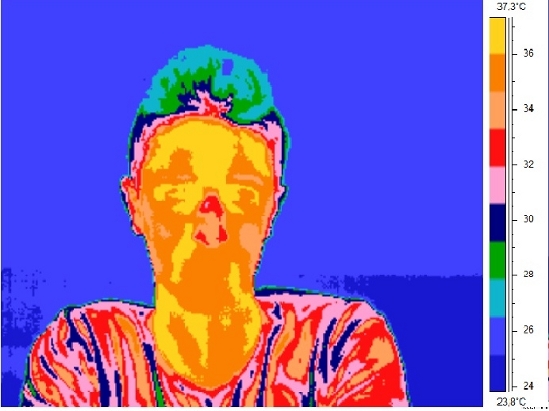Like Pinocchio, Your Nose Shows When You Lie

Much like Pinocchio, your nose could reveal that you're lying, though unlike the beloved character, your nose will heat up instead of growing longer when you tell a fib, new research claims.
Psychology researchers from the University of Granada in Spain used thermography to study the temperature of people's faces in experiments. They said they found a jump in the temperature around the nose and in the orbital muscle in the inner corner of the eye during lying. They also found that face temperature drops for people performing a difficult mental task and rises for people experiencing high anxiety.
The researchers said these effects could have something to do with the insula, a region of the brain involved in consciousness as well as the detection and regulation of body temperature. Lying boosted activity in this region, the team said. [Why We Lie]
Thermography could be used to study emotional or physiological states that become manifest through body temperature, such as sexual excitement, which heats up the chest and genitals, and even empathy. The researchers said that when highly empathic people see a person getting an electric shock in the forearm, they experience an increase in the temperature in their forearm as if feeling the other person's pain.
In fact, past research showed that when touched by a male experimenter female heterosexuals in the study had an increase in skin temperature, specifically in the face and chest. That study, detailed May 30 in the journal Biology Letters, suggests skin-temperature changes may help scientists study arousal non-invasively.
In addition to detecting emotions, thermal cameras could out a drunk, according to a study detailed this year in the International Journal of Electronic Security and Digital Forensics. In that study, researchers at the University of Patras in Greece had 20 healthy participants down an 11-ounce (330-milliliter) glass of beer every 20 minutes, for a total of four drinks; after each, the researchers took a sequence of infrared pictures of their faces. The team found that for drunk people, the nose and mouth regions are generally hotter compared with the forehead.
The new work focused on the so-called "Pinocchio effect" was part of a doctoral thesis and has yet to be published in a scientific peer-reviewed journal.
Sign up for the Live Science daily newsletter now
Get the world’s most fascinating discoveries delivered straight to your inbox.
Follow LiveScience on Twitter @livescience. We're also on Facebook & Google+.










